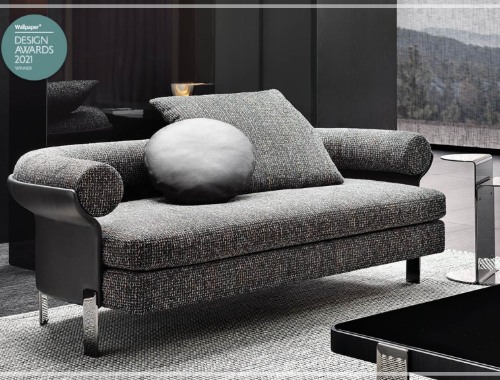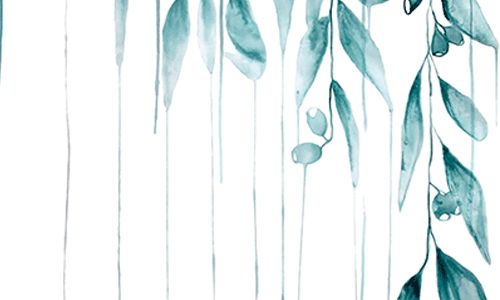Kolman Boye Architects, Benchmark, and AHEC collaborate to create a unique food delivery experience for Wallpaper* Handmade in Milan
The American Hardwood Export Council (AHEC) partnered with architects Kolman Boye and furniture-makers Benchmark to showcase a towering structure of food plates in a commission for Wallpaper* Handmade 2015 called the ‘Rotunda Serotina’. The Danish/ Swedish architects Kolman Boye were invited by Wallpaper* to design a candy-store concept for serving free savory biscuits from local bistro T’a Milano.

It takes less than a minute for new growth in the U.S. forest to replace the cherry logs harvested to manufacture the ‘Rotunda Serotina’
The American Hardwood Export Council (AHEC) partnered with architects Kolman Boye and furniture-makers Benchmark to showcase a towering structure of food plates in a commission for Wallpaper* Handmade 2015 called the ‘Rotunda Serotina’. The Danish/ Swedish architects Kolman Boye were invited by Wallpaper* to design a candy-store concept for serving free savory biscuits from local bistro T’a Milano.
Wallpaper* teamed up the designers with Benchmark, a company which has almost unparalleled knowledge of wood, to build the structure in collaboration with AHEC, the leading international trade association for the American hardwood industry. Constructed entirely of American cherry (Prunus serotina), the installation was a massive success at the Wallpaper* Arcade over the course of five days (April 14 – 18, 2015).
The tall columns of shelves were arranged in a cylindrical shape so that a single ladder could slide around inside the structure to scale every shelf. Each shelf in the Rotunda held rows of cherry wood snack trays that visitors could take home as limited edition samples from the exhibit. All 526 trays were snapped up by enthusiastic visitors in under three hours.
At over 3.7 m in diameter and the same in height, this was not really a piece of furniture but a substantial yet lightweight structure. With this in mind, AHEC turned to engineers Arup, central to a number of previous AHEC projects, including the ‘Timber Wave’ and ‘Endless Stair’, to carry out a structural appraisal and prototype tests, in order to inform the construction.
“In total we made 3,084 separate pieces connected by 1,008 joints to make up the ‘skeleton’ of the Rotunda together with 528 trays for the surface layer, all assembled without the use of nails, screws or glue. It is a wonderful piece of cabinet making and a tribute to the skills of our craftsmen who have used their fine techniques on such a grand scale,” explains Sean Sutcliffe, Co-founder of Benchmark.
“Cherry wood, from a craftsman’s point of view, works beautifully and finishes to a gorgeous silky texture. As a fruit wood, it has been prized through history and should be prized now. It has become a victim of fashion, which the forestry industry can ill afford given its 100-year planting and cropping plan. Rotunda Serotina continues our work on Life Cycle Assessment, which we hope will be taken on widely in the furniture making industry,” adds Sutcliffe.
Rotunda Serotina is one of a number of AHEC projects in 2015 that will celebrate cherry. There are already indications that furniture designers are looking at cherry wood again as a material of choice, which hopefully will lead to it becoming architecturally fashionable in the near future. Given that cherry turns well on a lathe and also steam-bends with ease, AHEC is positive that this sustainable and versatile wood will make a comeback.
The Rotunda Serotina has its own full Environmental Life Cycle Assessment (LCA) created by consultants thinkstep (formerly PE international) using data from AHEC’s groundbreaking LCA study of U.S. sawn hardwood and data collected by Benchmark during the manufacturing process. The dominance of American cherry in the Rotunda and limited use of other more energy-intensive materials contributes to a very strong environmental profile.
Highly desirable and readily available in the U.S. forest but underutilized in recent years, it takes less than a minute for new growth in the U.S. forest to replace the cherry logs harvested to manufacture the Rotunda. As such, the Rotunda is carbon neutral on a cradle-to-grave basis. In addition, around a tonne of CO2 equivalent is sequestered in the main structure of the Rotunda and a further 295kg in the trays.
Wood resource
American black cherry, which grows extensively in Pennsylvania, New York, Virginia and West Virginia, is one of the world’s fastest growing temperate hardwoods. It regenerates naturally and ages to a striking, rich reddish-brown color. From a craftsman’s point of view, cherry works and finishes well. And yet cherry is still being vastly underutilized. Cherry has become a victim of fashion, which the forestry industry can ill afford given its 100-year planting and cropping plan. Establishing a balance between market demand and the dynamic of the forest is then essential to achieve true sustainability.
U.S. forest inventory data shows that cherry harvests could be greatly increased without undermining forest integrity or biodiversity. American cherry growing stock is 306 million m3, 2.7 percent of the total U.S. hardwood growing stock. American cherry is growing 8.6 million m3 per year while the harvest is 3.5 million m3 per year. After harvesting, an additional 5.1 million m3 of cherry accumulate in U.S. forests every year. Given that growth exceeds harvest in all U.S. states, it takes around 55 seconds for new growth in the U.S. forest to replace the cherry logs harvested to manufacture the Rotunda.
Carbon footprint
The Rotunda is better than carbon neutral. The cradle-to-grave carbon footprint is -460 kg of CO2 equivalent. Emissions during all stages of material extraction and processing, manufacturing, and transport are 3,550 kg of CO2 equivalent. This is offset by 4,010 kg of avoided emissions from energy recovery. As a bespoke project with many individual elements, a high proportion of wood required to manufacture the Rotunda did not end up in the finished product. Wood was also required for the crates to transport the Rotunda from the UK to Milan.
The significant volume of waste wood diverted to energy production offsets use of fossil fuels in other industrial processes and is therefore recorded as a credit in the LCA. The downside of wood wastage is that the long-term carbon storage potential is reduced. Nevertheless, 1,042 kg CO2 equivalent remains sequestered in the main structure of the Rotunda and a further 295 kg in the 1,650 trays manufactured for the Rotunda.
Other impacts
The eutrophication potential (EP) of the Rotunda is 3.45 kg of phosphate equivalent, about the same as caused each year by conventional farming of 0.16 hectares of land for wheat in the EU. Most EP of the Rotunda is due to nitrate emissions during burning of fuels for transport and material processing. Hardly any EP is linked to growth of U.S. hardwoods, which thrive under natural conditions and rarely require fertilisers.
The Rotunda’s acidification potential (AP) of 32 kg of SO2 equivalent is mainly caused by emissions during shipping of hardwoods from the U.S. to the EU and is due to the high sulphur content of marine fuels. The Rotunda’s Photochemical Ozone Creation Potential (POCP) is 5.8 kg of Ethene equivalent. Processing of U.S. hardwoods makes a significant contribution to POCP due to the presence of terpenes, naturally occurring VOCs, in wood resin. Although terpenes are released naturally as trees grow, processes in which wood is heated lead to more significant emissions.
Renewable energy
The 122 GJ input of renewable energy is due partly to the high proportion of thermal energy from burning of wood waste during processing of wood for the transport crates and the hardwood kiln drying process. At least 90 percent of all thermal energy used for kiln drying in the U.S. hardwood sector is derived from biomass.
The high proportion of renewable energy attributed to the forestry stage is a feature of life cycle inventory rules for wood products and has nothing to do with the energy for forestry operations. It is the solar energy absorbed by the tree during growth and converted into chemical energy within the wood itself. In other words it is the energy that would have been released if the wood were burnt immediately after harvest.
Making a comeback
“For visitors not used to seeing the striking pale-pinkish red timber in their surroundings, the emergence of Prunus serotina was a revelation. Gone were the traditional reddish, highly lacquered connotations of cherry. The contemporary porous appearance of the wood fit in beautifully with the current vogue for raw, rugged timber,” said Roderick Wiles, AHEC Director for Africa, Middle East, South Asia and Oceania.
All of the cherry for the project was facilitated by Morgan Timber and NHG Timber and donated by AHEC members including Wheeland Lumber Company; Bingaman & Son Lumber; Cersosimo Lumber Co; Allegheny Wood Products; Blue Ridge Lumber; and J & J Log and Lumber. Cherry’s sustainability means it will likely always be available to bespoke and industrial furniture makers. AHEC’s focus on cherry at Milan’s Salone del Mobile then marks a turning point and a fresh chapter for this important hardwood.



 沪公网安备31010402003309号
沪公网安备31010402003309号



